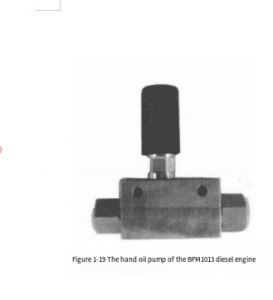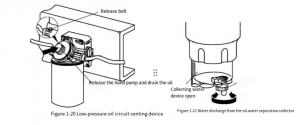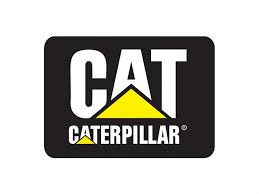The BFM1013 diesel engine uses a single pump fuel system. For diesel engines using a single pump fuel supply system, the maintenance and repair of the single pump are completely different from those of traditional diesel engine injection systems, and have many special requirements, which brings a lot of trouble to users and repairers. Due to the special nature of the BFM1013 diesel engine injection system, most of its use and maintenance work revolves around the fuel system. If the maintenance work is not in place, the fuel system will often have problems and cause the diesel engine to malfunction. Therefore, it is very important to master the maintenance points of this diesel engine
Deutz Diagnostic Tool Communicator for Deutz Engine DECOM Controllers
(1) Method for draining the low-pressure oil circuit of the diesel engine The BFM1013 diesel engine fuel system uses a single pump fuel supply system, which has certain special features in removing air from the fuel system. Because unit injection pumps require high fuel pre-pressure, they have two systems: 0.3MPa and 0.5MPa (for a specific diesel engine, only one of these systems may be used). Normally, the pressure should be no less than 0.2MPa (0.3MPa system) and 0.45MPa (0.5MPa system). Therefore, for a 0.5MPa system, the return oil bolt’s spring force is much greater than that of an in-line pump, making it difficult to bleed the fuel using a standard hand pump. Improper operation can make it difficult to remove air. Incomplete bleeds may cause difficulty or even failure to start the diesel engine, and may also cause cavitation in the unit pump and pump chamber. ① BFM1013 Diesel Engine Fuel System Bleeding Methods: If a diesel engine fails to start due to air in the fuel system, the following three methods are recommended. a. Before draining, loosen the high-pressure fuel line compression nuts on the injectors and use a hand pump to pressurize and vent fuel until bubble-free fuel flows from all high-pressure fuel lines. Then, tighten the high-pressure fuel line to complete draining. b. Before draining, tighten the high-pressure fuel line nuts on the unit pumps and use a hand pump (Figure 1-19) to pressurize and vent fuel until bubble-free fuel flows from all high-pressure fuel line outlets. Then, tighten the high-pressure fuel line nuts to complete draining. c. Before draining, first loosen the return oil relief valve on the low-pressure fuel chamber, rather than loosening the bleed bolt on the fuel filter as with in-line pumps. Then, pump oil to vent fuel until bubble-free fuel flows. After draining, tighten the return oil relief valve to complete draining. Note: Regularly loosening the high-pressure fuel line to vent fuel is not recommended. Of the above methods for draining, the first one is the most effective, but it’s relatively tedious and complex. If you’re not familiar with diesel engines, you need to be careful when using it to avoid damaging the valve cover gasket and causing oil leaks.
2024 Deutz SerDia 4.0 SerDia2010 14.1.9.3 Highest Level 6 Diagnostic Software

Figure 1-19 BFM1013 diesel engine hand oil pump
c. Before draining, loosen the return oil relief valve on the low-pressure oil chamber, rather than loosening the bleed bolt on the fuel fine filter as with an in-line pump. Then pump the oil to bleed air until bubble-free fuel flows out. After draining, tighten the return oil relief valve to complete the draining process. Note: Regularly loosening the high-pressure oil line to bleed air is not recommended. Of the above methods for draining, the first one is the most effective, but it’s relatively tedious and complex. If you’re not familiar with diesel engines, you need to be careful when using it to avoid damaging the valve cover gasket and causing oil leaks. Regardless of the method used to drain the diesel fine filter in the unit pump fuel system of some diesel engines, it is imperative that all air in the fuel system be completely expelled. Otherwise, starting the diesel engine will be difficult. ② Bleeding Methods for Other Unit Pump Diesel Engine Fuel Systems: Some units are equipped with a drain device (indicated by the arrow in Figure 1-20). The draining requirements are as follows.

Figure 1-20 Low-pressure fuel line drain device
Figure 1-21 Draining the oil-water separator water collector
a. Loosen the bleed plug at the top of the fuel filter and use the hand pump on the coarse filter to drain until the fuel filter is full of fuel and the fuel flowing out of the bleed plug is free of bubbles. Then tighten the bleed plug.
b. Loosen the bleed plug at the top of the unit pump chamber and use the hand pump to drain until the pump chamber is full of fuel and no bubbles are emitted. Then tighten the bleed plug.
c. Loosen the connectors connecting the high-pressure fuel lines to the injectors of each cylinder. Use a hand pump to expel air from the high-pressure fuel lines until fuel flows out. Then tighten the connectors.
d. After draining, wipe clean the fuel flowing out of the diesel engine and the frame before starting the diesel engine. e. It is forbidden to use the starter to drag the diesel engine for draining.
f. During the draining process, avoid splashing the fuel onto the exhaust pipe, starter, wiring harness (especially the connector). If it is accidentally splashed, wipe the fuel clean.
g. During the draining operation, the fuel must be kept clean and free from contamination.
(2) Precautions for the use of the single pump fuel supply system
① Since the single pump injection pressure is high, the quality requirements for the fuel are relatively strict. Therefore, the fuel system of the diesel engine should adopt at least a two-stage filtration system (coarse filtration and fine filtration). If conditions permit, a special oil-water separator filtration system can be installed. ② The fuel should be clean light diesel that meets national standards and must be precipitated and filtered for at least 2 to 3 days.
③ Regularly replace the diesel filter and clean the diesel tank.
④ Regularly drain the diesel coarse filter with oil-water separator, as shown in Figure 1-21.
⑤ During disassembly and maintenance, ensure the work area is clean to ensure a clean installation of the unit pump.
⑥ The unit pump high-pressure fuel line is a single-use component and should generally not be reused after disassembly.
⑦ It is strictly forbidden to disassemble the high-pressure fuel line while the diesel engine is running. Because the pressure within the high-pressure fuel line can reach 180.0 MPa and there is a pressure hold delay, the high-pressure fuel line should be disassembled 1 minute after the engine is shut down.
⑧ If the diesel engine experiences malfunctions such as difficulty starting, insufficient power, or prone to stalling, first inspect the low-pressure fuel line of the unit pump fuel system.


